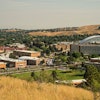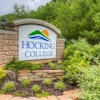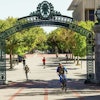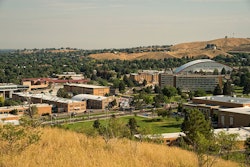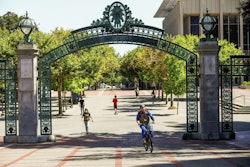LEXINGTON Ky.
The University of Kentucky’s
new surgical chief aims to put UK
on the medical map as a leader in the development of the artificial lung.
In the meantime, he’s never without his harmonica, and he
sits in for a band called Soul Patch.
Dr. Joseph P. “Jay” Zwischenberger, a Kentucky
native, has been working on plans for an artificial lung for 25 years. He
brought the project with him when he came from the University
of Texas to become chairman of
surgery at UK
in May.
He says he hopes to implant one of the devices in a patient
at UK within
about three years, if things go well.
“The exact timing would depend on the FDA,”
Zwischenberger said. “Given length of the regulatory process, the first
patient most likely will be done in Europe or perhaps in
China. But
let’s put it this way: I want the first patient in the United
States to be done here.”
Much has been written about the artificial heart over the
past two decades. Work on the artificial lung has received much less coverage,
although researchers were making attempts to build such devices as early as the
1930s. Now at last they seem to be getting close.
An artificial lung would be a mechanical device that would
infuse the blood with life-sustaining oxygen and remove carbon dioxide. There
are devices that can do this now. The heart-lung bypass machine, for example,
is used in operating rooms every day to keep patients alive during open-heart
surgeries.
Another machine is called the ECMO, for Extracorporeal
Membrane Oxygenation. It can provide cardiac and respiratory support for
patients whose lungs are diseased. But such devices are intended for only
short-term use.
A patient with a full-fledged artificial lung could use it
for days or weeks at a time. But the device would not be a permanent
replacement. Instead, doctors expect to use it as an interim tool that could
keep lung-disease patients alive while they awaited lifesaving transplants.
“The artificial lung is going to happen,”
Zwischenberger said. “It’s just a question of which of the six or seven
centers around the country that are working on it comes up with a device that
is the most practical and applicable, and has enough safety to be
worthwhile.”
Zwischenberger, 55, has been interested in mechanical
devices since he was a teenager in Louisville.
When he was 14, his father bought a Model A Ford that barely
ran, and they spent the next two years restoring it. Zwischenberger drove the
car all through high school, and later proposed to his wife, Sheilah, in it. He
still has the car. In fact, he has six antique Fords, one of which he plans to
display next month in the Keeneland Concours d’Elegance, which benefits the
Kentucky Children’s Hospital.
Zwischenberger “Zwisch” to his friends also was a
pilot for a while. He even took aerobatic lessons, but he gave them up because
of air sickness.
Music is another strong interest. He played guitar in a rock
band in Louisville in the late 1960s, and when he went off to college at UK his
mother gave him a banjo. He was hooked on the instrument, took lessons from
Lexington’s own five-string virtuoso J.D. Crowe, and later played with various
bluegrass bands in Texas.
Some years ago he took up the harmonica, and now, in his
spare time, he sits in with a local band called Soul Patch. He carries a
harmonica at all times, even at work.
“You can’t go anywhere without your harmonica,”
Zwischenberger says.
But medicine is Zwischenberger’s ultimate passion. After
completing his medical degree at UK in 1977, he spent the next few years at
various hospitals around the country, perfecting his skills as a cardiothoracic
surgeon.
At the University of Michigan, Zwischenberger worked with
Dr. Robert Bartlett, a pioneer in the development of the ECMO, and he later
worked on ways to improve the machine. The association sparked Zwischenberger’s
interest in the artificial lung, and he still calls Bartlett his mentor.
Zwischenberger estimates that more than 2,000 patients could
use the artificial lung each year.
– Associated Press
© Copyright 2005 by DiverseEducation.com

